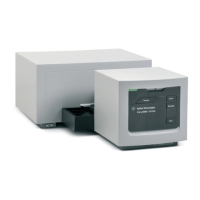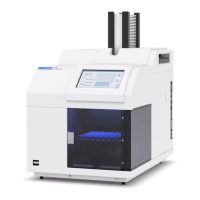54 Understanding Your Agilent ChemStation
2 Methods
What Happens When a Method is Run?
• When the Data Acquisition is finished, copy of the currently executed
method is stored as ACQ.M for the data file by default.
Data Analysis (Run Time Checklist)
When the stop-time has elapsed, the analysis is finished and all raw data is
stored on the computer’s hard disk. The data analysis part of the software
starts when all the raw data is stored.
Integration
• chromatogram/electropherogram objects in the signal are integrated as
specified in the Integration Events dialog box.
• The start of the peak, the peak apex, retention/migration time and the end
of the peak are determined.
• Baselines are defined under each peak to determine final peak height and
area.
• The integration results are created as an Integration Results list.
Peak Identification and Quantification
• Using retention/migration times and optional peak qualifiers, the software
identifies the peaks by cross-referencing them with known components
defined in the calibration table.
• By using peak heights or peak areas the software calculates the amount of
each detected component using the calibration parameters specified in the
Calibration Table.
Spectra Library Search (ChemStations for LC 3D, CE, CE/MS and LC/MS
Systems Only)
For all peaks that have UV-Visible spectra available, an automated search of a
predefined spectral library may be done to identify the components in the
sample based on the UV-Visible spectra. See Understanding Your Spectral
Module for details.

